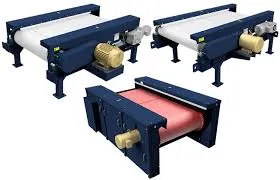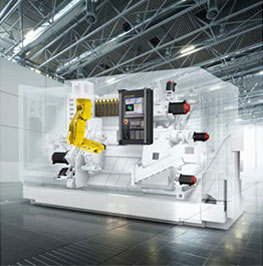Navigating the labyrinth of industrial equipment procurement involves understanding the intricacies of the machinery and the implications of price on total cost of ownership. The process of selecting an eddy current separator involves a deep dive into its complex pricing structure, which plays a pivotal role in making sound purchasing decisions.

Eddy current separators are crucial in the metal recycling industry, deftly separating non-ferrous metals from waste streams. The price of these machines often reflects the specifications, capabilities, technological advancements, and support services they encompass.
The base price of an eddy current separator primarily depends on its capacity and build quality. Ideal capacity is dictated by the volume of materials needing processing. Industries dealing with substantial volumes of waste stream typically require separators with higher throughput. Premium machines with large feeding widths and high processing speeds generally command higher prices. However, these models provide efficient operation, reducing downtime and optimizing metal recovery rates, translating into long-term savings.

Material and build quality are priorities for reliability and durability. Machines constructed with high-grade alloys, advanced composite materials, and high-performance magnets might elevate initial costs but ensure better operation longevity and minimal maintenance disruption. High-quality separators are an investment, mitigating the frequency of replacements and costly repairs over time. This aspect resonates with Experience and Trustworthiness; buyers need equipment that stands the test of time and weather.
Technological advancements impact prices significantly. Modern separators integrate cutting-edge technologies like artificial intelligence and machine learning, dynamically adjusting to variations in material flow for enhanced efficiency and accuracy. These systems may come with a premium, yet they offer remarkable ROI through operational efficiencies and improved recovery rates. Harnessing technology also aligns with Expertise, proving the manufacturer’s proficiency in delivering state-of-the-art solutions that meet contempoary demands.
eddy current separator price
After-sales support and warranty also figure into the cost considerations. Comprehensive support packages vouch for Authoritativeness and Trustworthiness, reducing operational risks through guaranteed assistance and maintenance. Opting for a separator with a comprehensive warranty can prevent unexpected costs associated with unforeseen breakdowns. This speaks volumes of the manufacturer’s confidence in their product, enhancing buyer assurance.
Potential buyers must assess the total cost of ownership (TCO), which extends beyond the initial purchase price. TCO encompasses costs related to installation, maintenance, operational training, and energy consumption. Machines with higher upfront costs but lower operational expenditure, thanks to energy-efficient technologies, often provide better long-term value. This consideration emphasizes a holistic financial view, transcending mere price comparison, and underscores a competent purchasing approach.
Conversely, opting for a lower-cost version might seem economically sensible initially, but could prove costly in the long run. Equipment without advanced efficiency features or comprehensive support can lead to escalated energy bills and frequent repairs, which can erode initial savings swiftly.
Echoing Authoritativeness and Expert insights, consulting with industry experts or speaking with peers who have firsthand experience with eddy current separators can provide invaluable perspectives. They can offer real-world insights into the reliability, efficiency, and hidden costs associated with specific models or manufacturers, reinforcing informed decision-making based on authentic experiences.
Ultimately, navigating the eddy current separator market demands a balance between cost considerations and expected performance benefits. Rooting decisions in thorough research and expert consultations, while considering both tangible and intangible factor components, will position buyers toward selections best suited to their unique operational needs and long-term industrial strategy. By marrying cost analysis with comprehensive machinery understanding, prospective buyers ensure not only a purchase but a strategic investment in operational excellence and sustainability.


